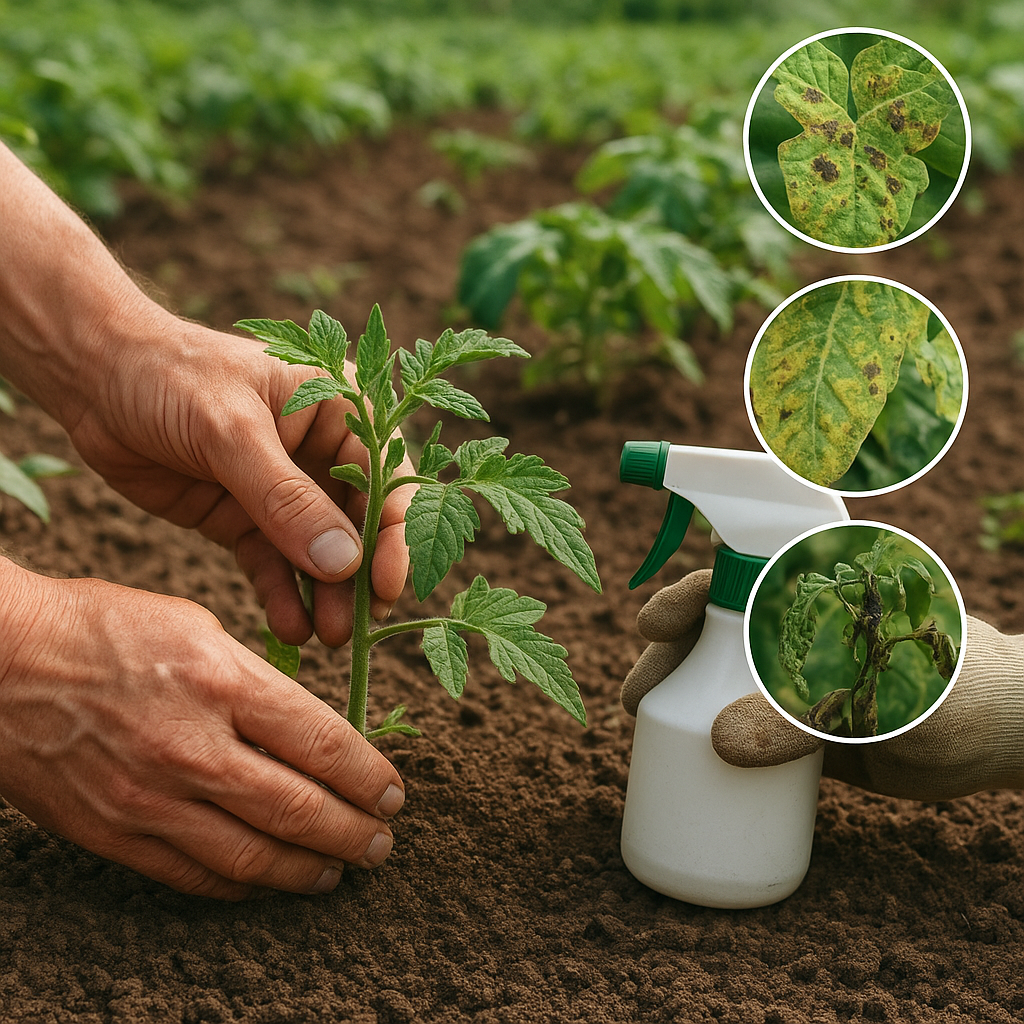
Effective management of plant health is essential for sustaining agricultural productivity and ensuring food security. By integrating scientific knowledge with practical field strategies, farmers can reduce crop losses caused by various diseases. This article explores practical methods to detect, prevent, and manage common crop diseases, enabling growers to maintain healthy fields and optimize yield.
Understanding Crop Diseases
Crop diseases arise when harmful pathogens such as fungi, bacteria, viruses, and nematodes infect plants. These micro-organisms can disrupt physiological processes, impair photosynthesis, and stunt growth. Recognizing the nature of each pathogen is vital for designing tailored management plans.
Types of Pathogens
- Fungal infections often manifest as spots, rots, wilting, and powdery or downy mildew.
- Bacterial diseases create soft rots, ooze, and leaf spots.
- Viral infections lead to mosaic patterns, chlorosis, and stunted development.
- Nematode infestations cause root galls, deformation, and reduced nutrient uptake.
Environmental Factors
Humidity, temperature, and soil conditions play a significant role in disease proliferation. Warm, wet climates can favor fungicides-resistant fungi, while overwatering and poor drainage create ideal conditions for root rots and bacterial outbreaks.
Identifying Early Warning Signs
Timely detection is key to preventing widespread damage. Regular field walks, accompanied by systematic monitoring, help pinpoint issues before they escalate. Employ the following tactics:
- Inspect lower and upper leaves for discoloration, lesions, or unusual growths.
- Examine stems at soil level for cankers, rot, or mildew.
- Check root systems by gently uprooting sample plants to detect nematodes or root decay.
- Use simple diagnostic kits or mobile apps for rapid pathogen identification.
Documenting symptoms and taking photographs aid in comparing with reference databases. Early detection not only limits spread but also reduces reliance on harsh chemical controls.
Implementing Preventive Strategies
A multi-faceted prevention plan targets the disease triangle: host susceptibility, pathogen presence, and conducive environment. Intervening at any point can break the cycle of infection.
Crop Rotation and Diversification
Employing crop rotation interrupts the life cycle of host-specific pathogens. Rotating cereals with legumes or brassicas, for example, reduces buildup of soilborne fungi and nematodes. Intercropping diverse species further complicates pathogen spread and enhances soil health.
Resistant Varieties and Genetic Diversity
Planting varieties bred for resistance to common diseases provides built-in defense. Genetic diversity within fields limits large-scale epidemics by ensuring not all plants are vulnerable to the same threat.
Soil and Field Sanitation
- Remove crop residues and volunteer plants that can harbor pathogens.
- Disinfect tools, machinery, and boots using appropriate agents to avoid cross-contamination.
- Implement buffer zones or fallow periods to reduce inoculum levels.
Maintaining clean field conditions significantly reduces the risk of disease outbreaks.
Water Management and Irrigation Practices
Optimizing irrigation techniques minimizes leaf wetness duration and soil moisture extremes. Drip or subsurface irrigation delivers water directly to roots, cutting down on overhead moisture that favors pathogen growth. Proper drainage prevents waterlogging and associated root rots.
Advanced Techniques and Innovations
Modern agriculture benefits from technological advancements and research-driven solutions. Embracing precision tools and biological methods enhances disease prevention while supporting sustainability.
Biological Control Agents
Introducing beneficial microbes and biocontrol agents such as Trichoderma spp., Bacillus subtilis, and mycorrhizal fungi can suppress pathogens through competition, antibiosis, and induced plant immunity. These natural allies complement traditional approaches and reduce chemical dependency.
Digital Tools and Data Analytics
- Remote sensing and drones equipped with multispectral cameras detect stress signals before visual symptoms appear.
- Field sensors monitor soil moisture, temperature, and leaf wetness in real time, triggering alerts for preventive action.
- Data platforms aggregate weather forecasts, historical disease records, and predictive models to guide fungicide applications and field operations.
Organic Amendments and Plant Boosters
Incorporating organic matter, compost teas, and plant extracts rich in natural elicitors strengthens plant defenses. Seaweed extracts, for instance, improve resilience by enhancing nutrient uptake and activating systemic acquired resistance.
Best Practices for Ongoing Disease Management
Continuous vigilance and adaptation are essential for long-term success. Integrating multiple strategies yields robust protection against emerging threats.
Regular Field Audits
- Schedule weekly inspections during critical growth stages.
- Maintain detailed logs of incidents, weather patterns, and treatment outcomes.
- Revise management plans based on audit findings and evolving conditions.
Education and Collaboration
Engage with agricultural extension services, research institutions, and farmer networks to stay updated on the latest disease control methods. Collective knowledge-sharing fosters resilience across communities.
Judicious Chemical Use
When chemical interventions are necessary, apply fungicides, bactericides, and nematicides as part of an integrated plan. Rotate active ingredients to prevent pathogen resistance and follow label instructions to protect beneficial organisms and environmental health.
Conclusion
Preventing common crop diseases demands a proactive, integrated approach that balances tradition with innovation. By understanding pathogen biology, observing early warning signs, and implementing holistic cultural, biological, and technological strategies, farmers can safeguard yields and promote long-term agricultural sustainability.

